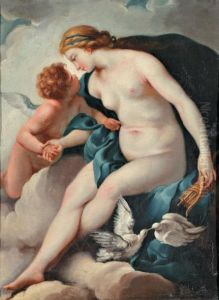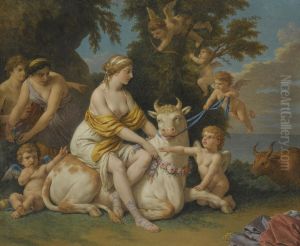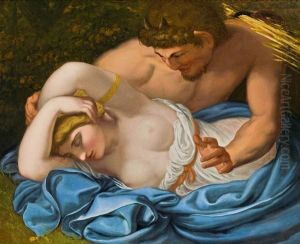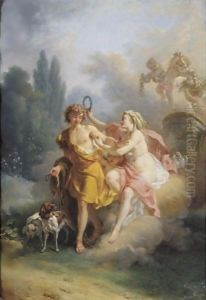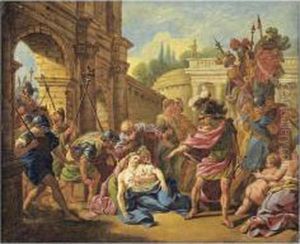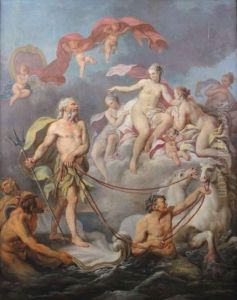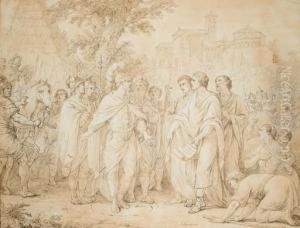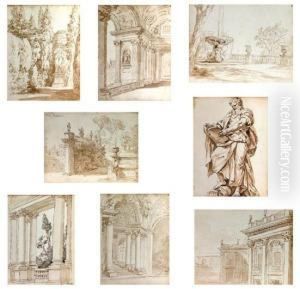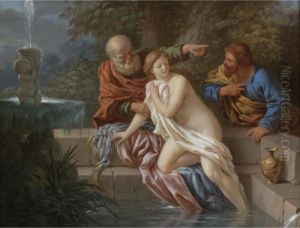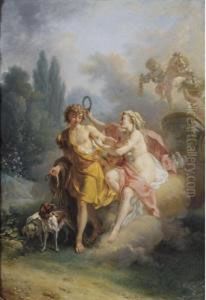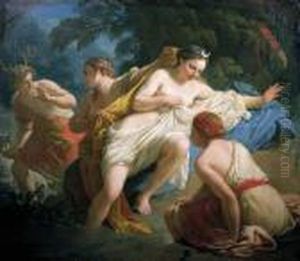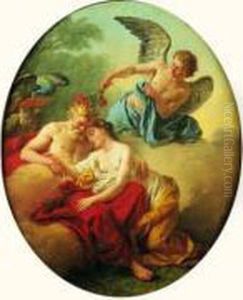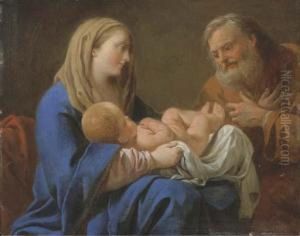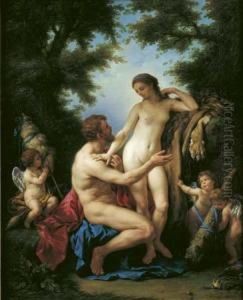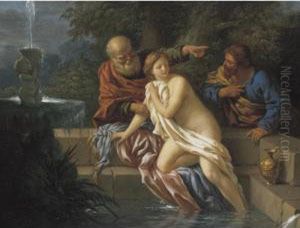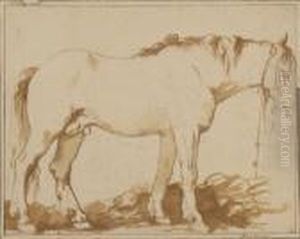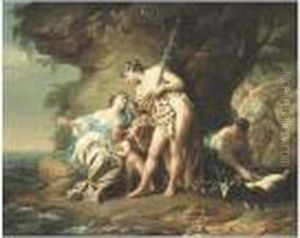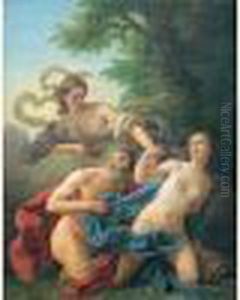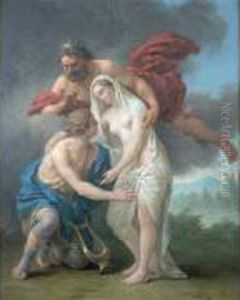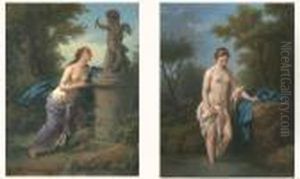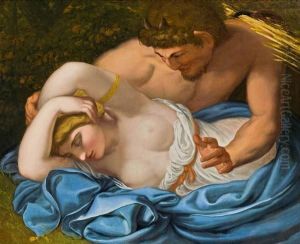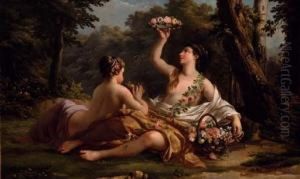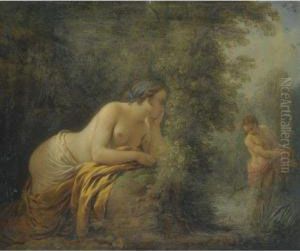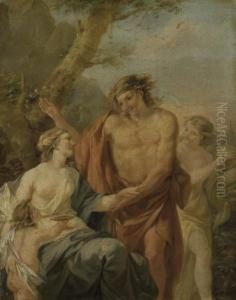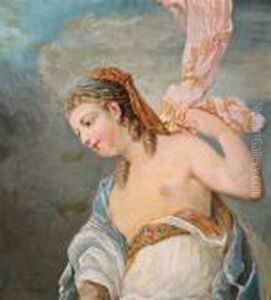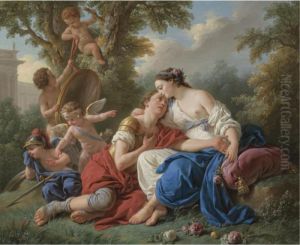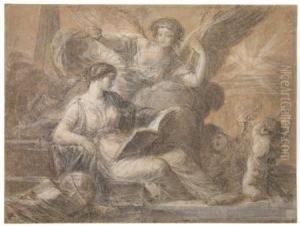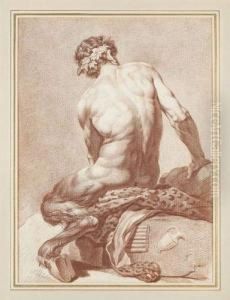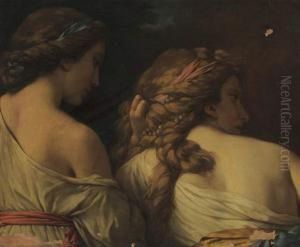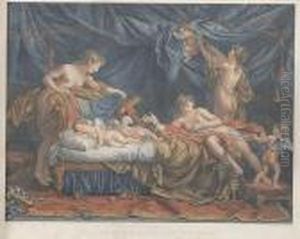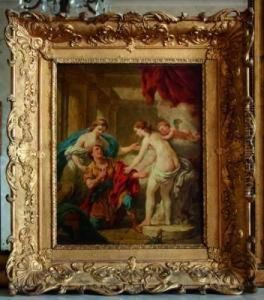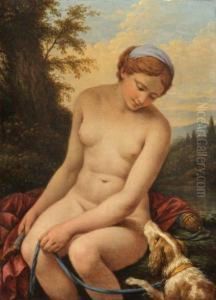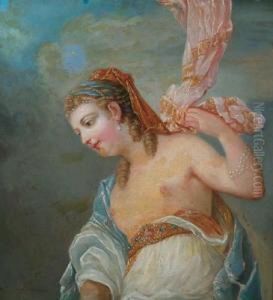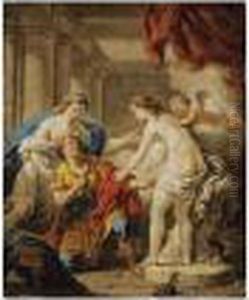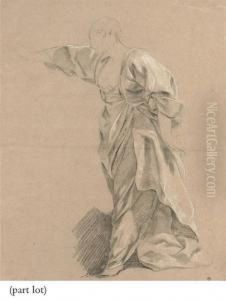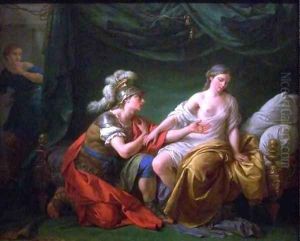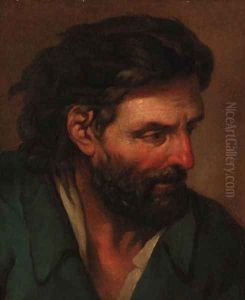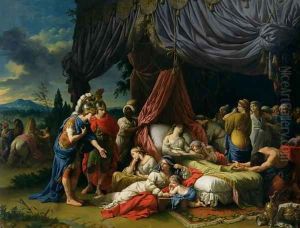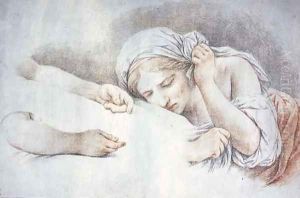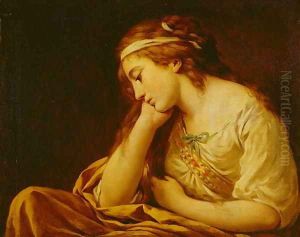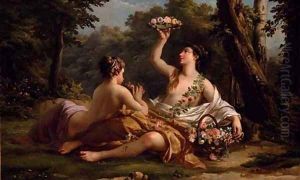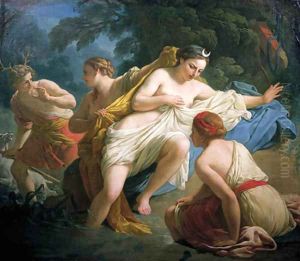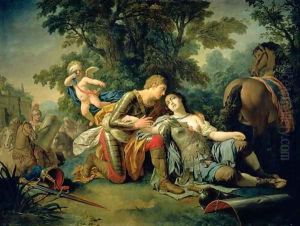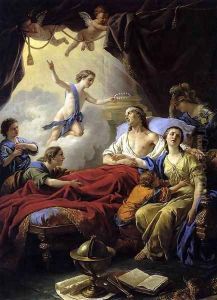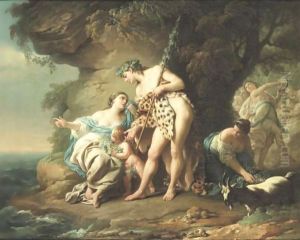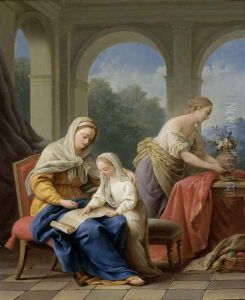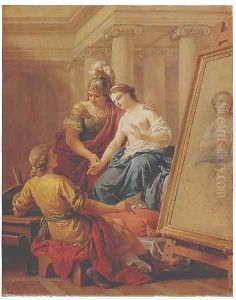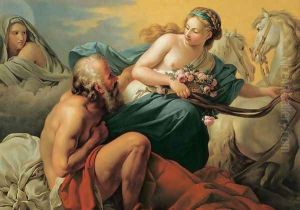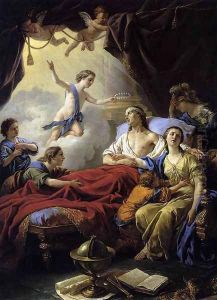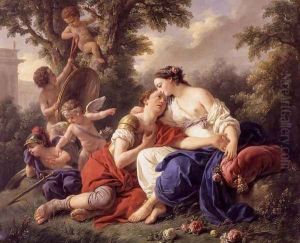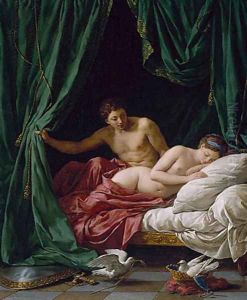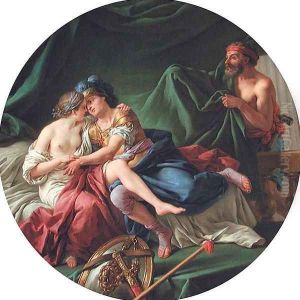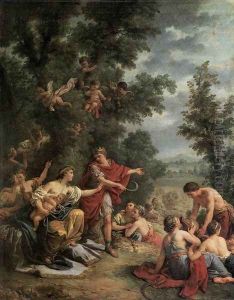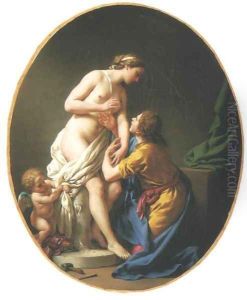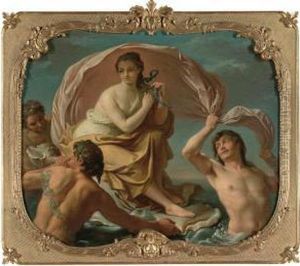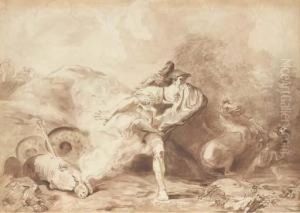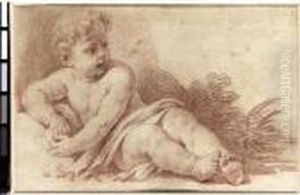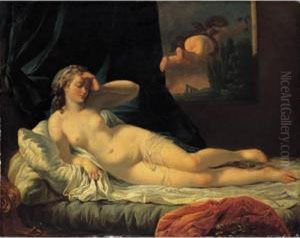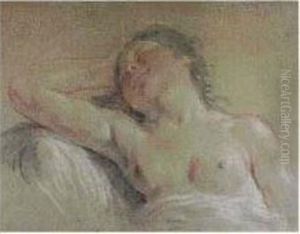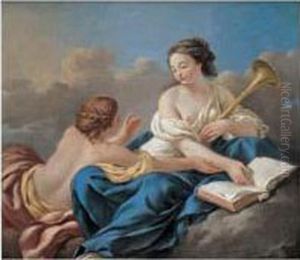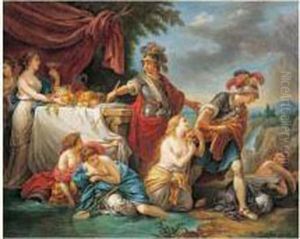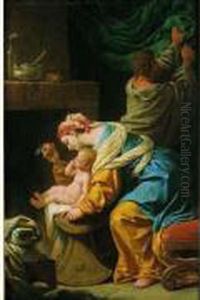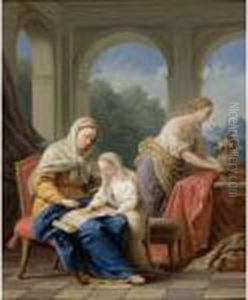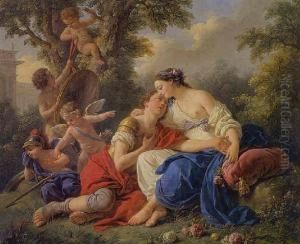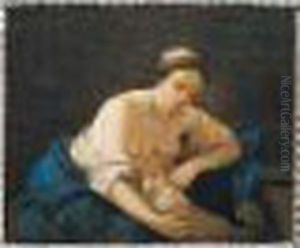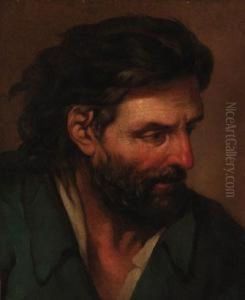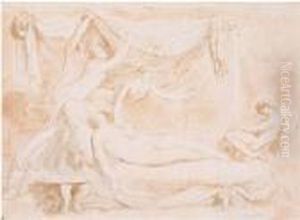Louis Lagrenee Paintings
Louis Jean François Lagrenée, also known as Louis Lagrenée the Elder to distinguish him from his younger brother Jean-Jacques Lagrenée, was a notable French painter and academician born on December 30, 1725, in Paris. He was particularly recognized for his history paintings and allegorical works that reflected the Rococo style, which was characterized by soft colors, graceful figures, and fluid lines.
Lagrenée received his initial training in the studio of Louis Galloche, who was a painter at the Royal Academy of Painting and Sculpture in Paris. He further honed his skills under the tutelage of Carle van Loo, a prominent French painter of the time. In 1749, Lagrenée won the prestigious Prix de Rome for his painting 'Aeneas Relating to Dido the Disasters of Troy,' which earned him a scholarship to study at the French Academy in Rome, an opportunity that had a significant influence on his artistic development.
During his stay in Rome from 1750 to 1754, Lagrenée was deeply influenced by the works of the Italian masters, particularly those of the High Renaissance and the Baroque periods. Upon his return to France, he was received into the Royal Academy in 1755 and was appointed professor in 1762. His reputation continued to grow, and he became the director of the French Academy in Rome from 1781 to 1787, a position that allowed him to influence a new generation of French artists.
Throughout his career, Lagrenée was commissioned to create numerous works for religious institutions, royal patrons, and private collectors. He painted mythological and historical subjects, often imbuing them with a sense of drama and emotion. Some of his notable works include 'The Abduction of Deianira by the Centaur Nessus,' 'Venus and Adonis,' and 'Allegory on the Death of the Dauphin.'
Lagrenée's style began to fall out of favor with the rise of Neoclassicism in the late 18th century, which favored a more austere and morally serious approach to art as opposed to the decorative and sensual qualities of Rococo. Despite this shift in artistic tastes, Lagrenée continued to work and exhibit his paintings until his death on June 19, 1805, in Paris. His legacy is preserved through his works that are held in various museums and collections around the world.

